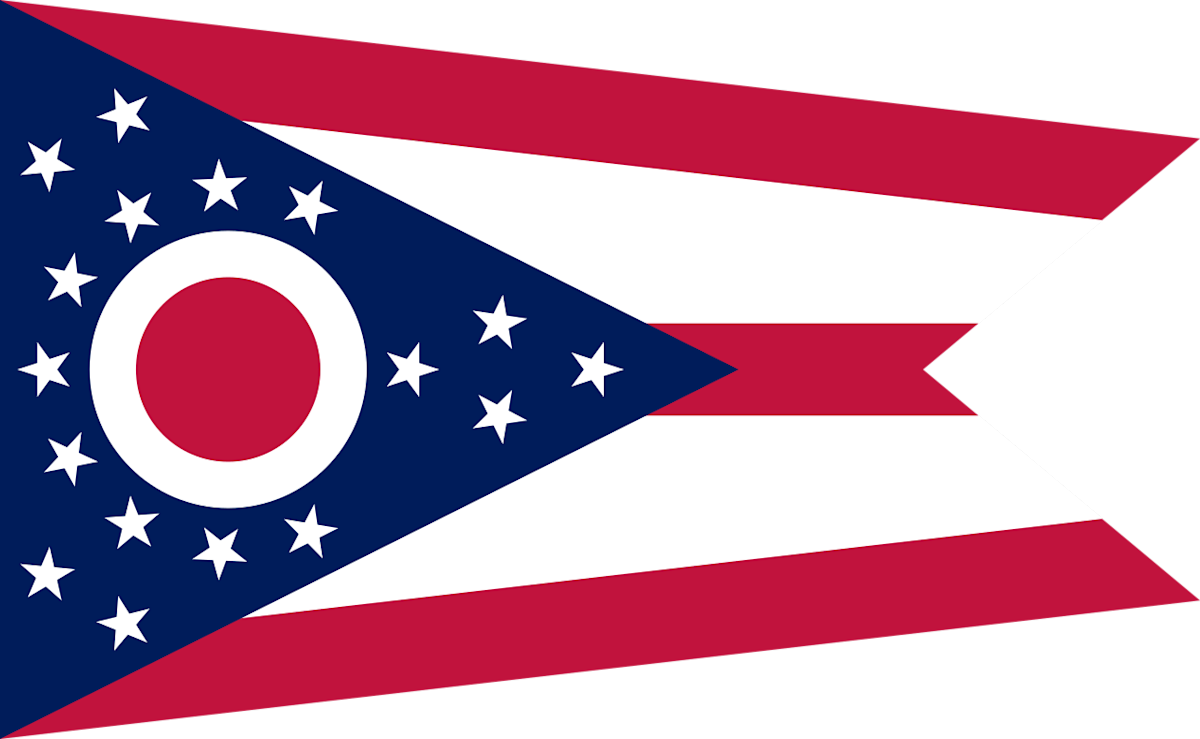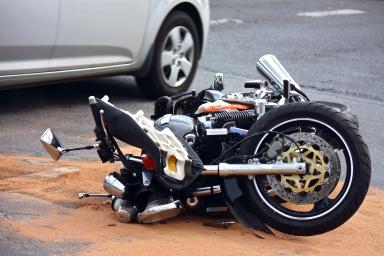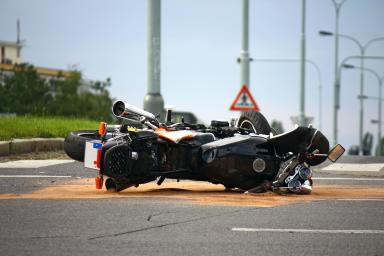Ohio Motorcycle Laws

Motorcycles are one of the most convenient and fastest travel methods, especially when alone. However, it is also among the most dangerous.
For instance, in 2022, there were 4,096 motorcycle-related crashes recorded in Ohio, most of which occurred in the counties of Franklin and Cuyahoga. Of those crashes, 209 were fatal, and 2,685 resulted in minor to severe injuries. Meanwhile, 799 of the crashes resulted in property damage.
Based on the trend from 2018, the number of motorcycle accidents has been rising annually. Thus, if you live in Ohio, it is crucial that you become aware of the state's motorcycle laws to protect yourself if and when you get involved in an accident.
The following outlines motorcycle accident laws and other related legislation that will help when you or someone you know becomes a motorcycle accident victim or gets involved in such a lawsuit.
Ohio Motorcycle Permit and License
You need a license to legally drive your motorcycle across Ohio. If you insist on riding without one, you will easily get into trouble with the law and be disadvantaged if caught in a motorcycle-related accident.
Therefore, securing a license before you set out on your motorcycle is essential. But to get this license, you must have a permit first.
Temporary Instruction Permit Identification Card (TIPIC) for Riders Below 18 Years Old
Ohio residents at least 15 years and 6 months old can apply for a motorcycle temporary instruction permit identification card (TIPIC). This card is valid for one year, during which time individuals can legally ride their motorcycles subject to these restrictions:
Permit holders must always carry their TIPIC while driving.
They can only drive during daylight hours.
They must not have any passengers while driving.
They should not be driving on interstate or congested roads.
They must wear a helmet and protective eyewear while driving.
Riders must also pass a knowledge test and a vision screening assessment to earn their TIPIC. Once they pass these tests, they can buy a TIPIC at a deputy registrar license agency. Later, this TIPIC will be used to get a license.
Motorcycle License for Riders Below 18
Motorcyclists under the age of 18 must get a probationary driver's license. Otherwise, they will have to wait until 18 to apply for a motorcycle license or endorsement. Riders can apply for a probationary license after having their TIPIC for six months. They must have fulfilled the following requirements:
Undertook driver education class at an approved driving school (which includes 24 hours of classroom or online instruction and 8 hours of driving time)
Completed 50 hours of driving (which is separate from 8 hours of driving time for driver education class and must include 10 hours of night driving)
Finished the motorcycle safety education course
Passed the driving and skill test
Similar to TIPIC, probationary licenses have specific restrictions, such as:
License holders cannot drive from 12 a.m. to 6 a.m. unless accompanied by a licensed adult.
They can only carry one passenger unless accompanied by a parent or guardian.
They must not use mobile devices while driving.
The restrictions are adjusted after 12 months. For instance, a ban on solo driving is enforced from 1 to 5 a.m. unless these conditions are met:
The license holder is accompanied by a licensed adult.
The trip is for work, school, or religious events, with documentation to support such.
Safety belts are worn, and the driver is not using their mobile devices while driving.
Riders must abide by the restrictions, along with other traffic legislation involving motorcycle driving. Otherwise, they risk getting their probationary license suspended.
Motorcycle-Only License for Riders 18 and Above
When Ohioans turn 18 years old, they do not have to apply for a probationary driver's license. They can get a motorcycle license or endorsement by scheduling and passing a skill test.
However, if they have a Motorcycle Ohio Basic Course completion card, they can opt not to take the test. Otherwise, they need to prepare their TIPIC and protective equipment (helmet and eyewear), which are needed for the skill test.
Also, their vehicles must be street-legal and safe before proceeding. Once applicants pass the test, they must buy their license before the TIPIC expires. On the other hand, if they fail, they can only retake the test after a week.
Motorcycle Endorsement for Driver License Holders
Even if the rider already has a driver's license, that does not mean he can operate any vehicle, including a motorcycle. The license must explicitly state that he is allowed to drive a motorcycle.
If yours does not, you can apply for a motorcycle endorsement. You must get a TIPIC first and then pass the skill test. After completing these, you can surrender your license so the motorcycle endorsement can be added. You can then get your license back before your TIPIC expires.
Ohio Laws on Protective Equipment
Motorcycle riders and passengers are mandated to wear protective equipment, such as helmets or eye devices, to protect them from the elements during trips and avoid serious injuries when involved in accidents. Several states, including Ohio, have legislation that discusses the use of this equipment.
Ohio Requires Riders Under 18 Years Old to Wear Helmets
According to Ohio's Administrative Code, riders under 18 must wear protective helmets with chin straps fastened. If those riders carry passengers, the latter must also wear similar protective equipment.
Thus, those 18 or older are not required to wear helmets in Ohio while driving a motorcycle. On the other hand, riders carrying a TIPIC instead of a motorcycle license are mandated to wear one even if they are 18 or older, as the TIPIC regulations specify that its holders must wear helmets.
Although helmets are not required, it is still highly recommended to wear one. Ohio ranks high among US states in motorcycle deaths without helmets; hence, wearing one while riding would be in your best interest.
Protective Eye Devices Are Required for All Riders in Ohio
Although helmets with chin straps are not a necessity, Ohio's Administrative Code states that protective eye devices are necessary for both drivers and passengers. These devices protect against the wind, debris, moisture, and other hazards.
There are four different types of protective eye devices:
Goggles: consist of eyepieces or cups held in place by a headband or temple piece
Face shield: a device attached to the helmet which protects wearers up until the tip of their noses
Windscreen: a device mounted on the motorcycle to help deflect wind and other objects
Spectacles: ordinary eyepieces with safety glass lenses
Motorcycle riders can have all of these devices or only some.
Only Two Motorcycles Are Allowed in a Single Lane in Ohio
In Ohio, lane sharing is allowed for motorcycles, as Section 4511.55 of the Ohio Revised Code specifies that a maximum of two motorcycles or bicycles can ride side-by-side in a single lane. The exception to this rule is the path or roadways exclusive to motorcycles and bicycles.
While the same section did not state anything about motorcycles and cars being allowed to share lanes, it did say that if a road is too narrow for motorcycles and overtaking cars to share, then the motorcycle rider does not have to stay near the edge of the road.
Moreover, Ohio's laws do not allow motorcycle drivers to lane split, which happens when a rider goes between lanes of slow or stopped traffic. Instead, the same section of the Revised Code emphasizes that the rider should keep to the right side of the road.
Ohio Motorcycle Noise Regulations
Loud or noisy motorcycles can be distracting to other drivers. For this reason, a law in Ohio regulates the noise level that vehicles, including motorcycles, can produce. It falls under the Revised Code and has the following restrictions:
The maximum noise limit is 82 decibels for motorcycles operating at a speed of 35 miles per hour or less.
The maximum noise limit is 86 decibels for motorcycles operating at a speed of more than 35 miles per hour.
Mufflers are required for all vehicles with an internal combustion engine to help keep their noise production within the above limits. Moreover, the law prohibits motorcycle racing, as it often produces noise that exceeds the above limits.
Those who do not abide by these limits will be fined and charged with a minor misdemeanor. However, if you intend to file a case against a rider because his loud motorcycle distracted you while driving and led to an accident, you will have to consult a lawyer to see if you have a strong case.
Speed Limits for Motorcycles in Ohio
Speeding is a major factor in many motorcycle accidents. For instance, the US National Highway Traffic Safety Administration reported that in 2020, 34% of fatal motorcycle crashes were speeding-related.
Hence, speed limits must be implemented, which vary according to the area/zone, vehicle, and number of lanes. In Ohio, the speed limits range from 20 to 70 miles per hour. The former is often reserved for school zones, while the latter is enforced on all rural freeways.
Additionally, the limits established by local authorities may take precedence over the limits outlined in the Revised Code. To implement these regulations, the authorities must erect signs indicating that such speed limits are valid.
Motorcycle riders must be aware of the speed limits in the state. They won't only avoid unintentionally speeding and receiving a ticket from a traffic cop, but more importantly, they'll reduce the likelihood of speed-related accidents.
Speeding is a firm ground for negligence in Ohio motorcycle accidents. If the other party proves you were speeding, you will likely be held at fault. However, if you can prove otherwise, it will be easier to win your lawsuit and recover compensation for damages.
Ohio’s Policy on Motorcycle Pursuits
Some states have adopted a no-chase policy to prevent unwanted harm or damage from speeding while going after suspects. However, Ohio is not one of those states.
Ohio’s Revised Code allows state institutions, with authorities or officers permitted to conduct arrests, to craft policies regarding chasing or pursuing motor vehicles of law violators.
For instance, the City of Marion, Ohio, has a pursuit policy specifying that chasing or pursuing suspects is only justified if the officer reasonably believes the crime or attempted crime is a serious felony. Officers of the law may follow those involved in less serious felonies, like traffic violations, but not at the speed or manner of chasing serious felons.
Marion also specifies a pursuit procedure wherein only two marked police vehicles can conduct the pursuit. If the officers chased someone with an unmarked car and the crime was not a serious felony, the law would not protect them in the case of accidents.
Take note that the City of Marion's policies may not apply to other cities or counties across the state. Thus, if you are involved in an accident resulting from an officer chase, you should look up the location's policies surrounding motor vehicle pursuits.
Ohio Motorcycle Insurance Requirements
Motorcycle insurance coverage is a requirement in Ohio. Without it, riders will be considered illegally driving their motorcycle in the state, even if they hold a TIPIC, a license, or are using protective equipment.
The insurance must be capable of covering the following during an accident:
$25,000 bodily injury coverage for one person
$50,000 bodily injury coverage for two or more people
$25,000 property damage
If the driver’s insurance cannot meet these standards—or he opts not to get one—the alternative is to establish financial responsibility. Here are some ways a person can prove financial responsibility:
$30,000 worth of bonds or cash, certified by the Bureau of Motor Vehicle (BMV) and deposited with the State Treasurer
$30,000 worth of bonds issued by an authorized surety or insurance company
BMV-issued bond worth $30,000, secured by real estate with an equity of at least $60,000
Ohio Is an At-Fault State for Insurance Claims
Ohio is an at-fault state. This means that if you are involved in a motorcycle accident and can prove that the other party is at fault, the driver will be responsible for damages and injuries.
However, you will have to pay if the other party proves vice versa. That is why the state's insurance requirements include coverage for injuries or damages to other people and properties.
How Much Can Someone Sue for a Motorcycle Accident in Ohio?
There is no limit imposed on a motorcycle accident victim suing for economic losses, which refer to quantifiable damages such as lost wages, medical expenses, and property damage. The compensation largely depends on what can be proven.
On the other hand, if the victim is also suing for non-economic losses, like pain, suffering, or mental anguish, Ohio's Revised Code states that the amount one can sue for should not exceed either $250,000 or three times the amount of economic loss (the limit depending on which is greater). The amount is further limited to $350,000 per plaintiff and $500,000 per accident.
Ohio Is a Modified Comparative System State for Motorcycle Accident Lawsuits
Ohio is among the states that follow a modified comparative system when allocating fault in motorcycle accident lawsuits. That is, if it is proven that a plaintiff has less than 50% of the fault or did not exceed the fault of all the defendants, he is still entitled to recover damages. However, the compensation the plaintiff will get will not be full because an amount equivalent to the percentage of fault will be deducted.
For instance, it was proven that you were 20% at fault and were suing for $100,000 worth of damages. Instead of getting $100,000 in total, you will only receive $80,000, per the modified comparative system.
Ohio Statute of Limitations for Motorcycle Accidents
The statute of limitations for motorcycle accidents in Ohio is two years from the date of injury. This gives victims time to file their lawsuits, even if some of the accident’s consequences are delayed.
However, certain cases may qualify for an exemption from the statute of limitations. For instance, with the discovery rule, the statute of limitations only begins when a person has (or should have) discovered an injury that resulted from the accident.
Note that these exceptions are rare and technical. Thus, you will need legal advice to confirm if your case qualifies.
Legal Resources for Ohio Motorcycle Accident Victims
Ohio Department of Insurance
The Ohio Department of Insurance’s website ensures that citizens have access to essential information related to all types of insurance, including motorcycle insurance. For instance, it has articles on how insurance rates are determined or what laws apply to surety bail bond agents. The site can also be used to relay other insurance-related queries or report fake companies.
Ohio Bureau of Motor Vehicles
The Ohio Bureau of Motor Vehicles (BMV) implements motorcycle-related legislation, such as registration, licensing, titling, and suspensions. Its website offers valuable resources, such as guides (e.g., how to get a motorcycle license), policies (e.g., limitations on TIPIC holders), and contact information. Riders can use these resources to prevent and deal with motorcycle accidents.
Ohio State Bar Association
The Ohio State Bar Association (OSBA) is an organization of lawyers that practice in the state. They offer their extensive network to the public, giving them access to legal information, services, aid, and referrals. Readers can search for law-related questions on their site. Meanwhile, if an attorney is required, OSBA also has a directory of its members and sorts them by location.
Motorcycle Operator Manual
Ohio's Motorcycle Operator Manual covers most things riders need to know, such as licensing, riding techniques, and information on three-wheeled supplements. It also touches on crucial motorcycle-related laws, including helmet compliance and driving under the influence of drugs and alcohol.
Expertise.com StaffAuthor
Step into the world of Expertise.com, your go-to hub for credible insights. We don't take accuracy lightly around here. Our squad of expert reviewers, each a maestro in their field, has given the green light to every single article you'll find. From rigorous fact-checking to meticulous evaluations of service providers, we've got it all covered. So feel free to dive in and explore. The information you'll uncover has been stamped with the seal of approval by our top-notch experts.


![¿Cuál es la indemnización promedio de las demandas por accidentes de moto? [2023]](https://images.ctfassets.net/k00sbju4hbzq/590XSDSoqNVs6XSMNY5s3G/a969ee3bedaaf9016cec601fc30f495b/average_motorcycle_accident_settlement.jpg?fit=fill&w=384&q=75)

